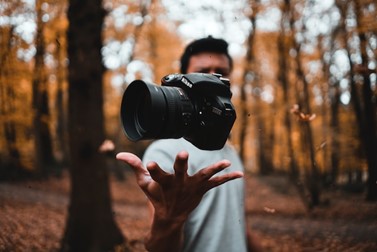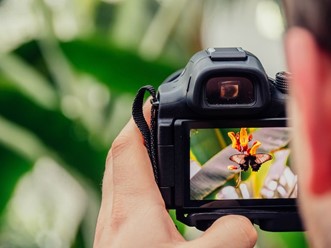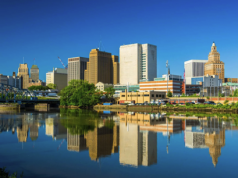Joe Blanchard of Asheville, NC is a seasoned photographer with a keen eye for harnessing the power of light. In the realm of photography, light isn’t just an element; it’s the very essence that breathes life into an image. In the following article, Joe Blanchard dives into the transformative impact that light wields in photography – from the play of shadows to the golden hour’s ethereal glow, Blanchard uncovers the artistry and technical finesse that light brings to every frame, ultimately defining the narrative and emotional resonance of a photograph.
Lighting is one aspect of photography that isn’t noticeable – unless utilized poorly. On the other hand, good lighting can provide information and, sometimes, invoke emotions.
Isn’t light just light? What else is there besides making the pictures brighter or darker?
As it turns out, there’s a lot more to explore.
Joe Blanchard Discusses Natural Light vs. Artificial
The sunlight, the light bulb, or the camera flash – all of these light sources can contribute to good photos. It just depends on when or how they’re utilized.
First, let’s find out the advantages of natural light.
Natural Light
Sunlight is an excellent light source when someone needs to take photographs of landscapes, nature, and wildlife – as viewers of the image will see these wonders in their everyday environment. However, portraits also turn out beautiful when natural light is used.
Joe Blanchard of Asheville, NC explains that other advantages of using natural light are:
• Availability
The great thing about using sunlight as a photographer’s light source is it’s free. If the photographer is outside, they can easily photograph their subject without any extra equipment.
Joe Blanchard of Asheville, NC says that sunlight can also be used indoors – and how the windows distribute the light can also contribute to the quality of the photo.
Additionally, sunlight also produces different hues.
• Hues
The sunlight also sets the tone for the photograph. And tones can evoke emotions. For instance, early morning sun can diffuse warm-toned lighting – with hues like yellow, amber, or red.
Joe Blanchard of Asheville, NC says that midday to afternoon sun produces the brightest natural light. Therefore, the images taken during this time will be bright, and the details will be visible. However, the sunlight during this time may also produce cool-toned hues.
But time isn’t the only contributing factor to the hues.
• Mood
The weather can also contribute to lighting – water droplets and cloud formations sometimes turn the sky into different colors, ranging from pink to deep purple. This phenomenon is often observed during summer.
Images taken while these skies were present can make the viewer feel nostalgic or excited about summer, admiring truly how beautiful nature can be.
Moreover, an overcast may produce grayer and duller photographs, which doesn’t necessarily equate to a bad photo. Some photographers seek that type of lighting to set a gloomy mood.
Joe Blanchard of Asheville, NC explains that others also want to take advantage of this lighting – as they enjoy taking photographs of animals that camouflage well in the snow.
Overall, these tones and hues can provide a sense of the time it was photographed and the emotions conveyed.
But when the sunlight’s positioning, brightness, and hues it diffuses can’t be controlled – in this case, artificial light is needed.
 Artificial Light
Artificial Light
Artificial light need not be costly. Some photographers use lampshades, ceiling lights, and even clip-on ring lights for their images and selfies. Furthermore, using artificial light also has advantages – photographers have various options for manipulating such light.
Joe Blanchard of Asheville, NC says that some of them are:
• Tone
Artificial lights come in different colors and tones – some are warmer, and some are cooler, which can mimic the sunlight and make photographs appear taken using natural light.
But a photographer can also control how the light source is scattered.
• Focus
A photographer can adjust how focused the light will be on a subject or how broad the light spans – they can achieve this by buying a reflector or diffuser. But others found DIY ways to diffuse light.
This is useful when a photographer wants to photograph a flower bed and only wishes to highlight one flower and obscure the rest.
Joe Blanchard of Asheville, NC explains that others also diffuse the light if they prefer softer shadows, which is the perfect option for headshot photos, as the transition from spotlight to darkness can sometimes look harsh.
However, if the photographer is going for that, they can also switch the light’s positions.
• Position
Understanding light position is perhaps the easiest.
A photographer can produce dramatic images depending on where they position the light. For instance, if the subject is against the light source, it creates a silhouette. If the light is directed on the left side of the person’s face, the right side will be obscured in the shadow.
Joe Blanchard of Asheville, NC discusses below more on how an amateur photographer can improve their skills further.
Quick Tips
- Check out photography magazines and websites – and draw inspiration from them.
- Consider taking photography classes.
- Continue practicing.
But do also remember the following:
- Using photo editing software doesn’t make a person an unskilled photographer.
- Light is just as essential as shadows; the presence of both adds three-dimensional layers to a photo.
- People have different photography styles – everyone will take unique photos.
- Photography is art – there’s not an objectively bad picture.
Summary
Everyone can produce amazing photos. But they can always be better when a person utilizes lighting. Not only does it highlight the subject, but it also reflects the mood and atmosphere of the photos.



 Artificial Light
Artificial Light
![Nevada Neighborhoods: 10 Best Places to Live in Nevada [2024]](https://ocnjdaily.com/wp-content/uploads/2023/12/AdobeStock_118799748-smsller-238x178.jpg)

